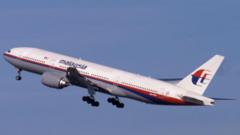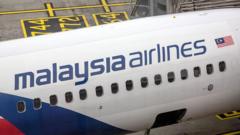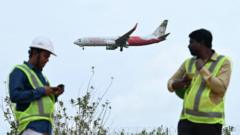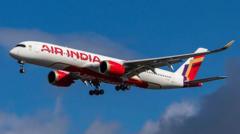The merger aims to consolidate operations and streamline services, but may struggle to maintain Vistara's premium standards amidst operational challenges.
India's Vistara Airlines Bids Farewell: Merging with Air India
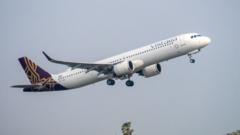
India's Vistara Airlines Bids Farewell: Merging with Air India
Vistara, once a beacon of premium air travel in India, will cease operations on Monday, merging into Air India.
In a significant shift for Indian aviation, Vistara will operate its last flight on Monday, marking the end of its nine-year journey as a prominent full-service carrier. The airline, a collaboration between Singapore Airlines and Tata Sons, is merging with Tata-owned Air India to forge a larger, integrated aviation entity with an expanded network and fleet. Consequently, all operations and customer services currently under Vistara's brand will transition to Air India, impacting everything from helpdesk kiosks to ticketing offices.
The integration process, which has been underway for several months, involves transitioning existing Vistara customers to Air India’s system, including their bookings and frequent flyer programs. As part of this merger, an Air India spokesperson revealed that the in-flight experience – including meals and serviceware – will reflect a blend of both airlines.
However, there are rising concerns regarding service quality following the merger. Many loyal fans of Vistara have expressed frustration over the decision to retire a brand celebrated for its high ratings in service and quality, with branding experts and analysts questioning the move’s strategic wisdom. Aviation analyst Mark Martin remarked that the merger appears to be a strategy primarily aimed at addressing Vistara's financial struggles, rather than enhancing operational efficiency.
Despite the challenges, there has been some positive momentum, with both Air India and Vistara halving their annual losses in the past year. Yet, the merger has encountered turbulence with staffing issues, including pilot shortages that have led to flight cancellations, as well as discontent among Vistara crew over salary alignment with Air India.
The departure of Vistara has opened a gap for a premium full-service airline in India’s competitive market, following the collapse of Kingfisher Airlines and Jet Airways. The Tata Group has pledged a $400 million refurbishment plan for its older aircraft, alongside ambitious orders for new planes to boost its portfolio.
Still, the merger raises branding concerns. Harish Bijoor, a brand strategy expert, lamented the loss of Vistara's excellence in Indian aviation, suggesting that Air India would face an uphill battle to replicate Vistara's service quality and customer experience. He proposed a strategy where Air India could have operated independently while enhancing its services, allowing Vistara to thrive as a distinct, premium brand.
As the merger progresses, communication will be critical. Customers may be caught off guard by Air India branding as they arrive expecting Vistara experiences. The cultural integration of Vistara's agile workforce into Air India's larger bureaucracy poses further challenges.
The newly unified Air India group, which will have a fleet size nearing 300 aircraft after integrating Air India Express, aims to enhance competitiveness against market leader Indigo. An Air India spokesperson assured that this merger signifies rapid growth and cooperation rather than competition.
However, the future remains uncertain for former Vistara customers who valued the airline's unique offerings in a diverse aviation landscape, prompting many to wonder whether Air India can successfully fill the void left by Vistara's departure.








